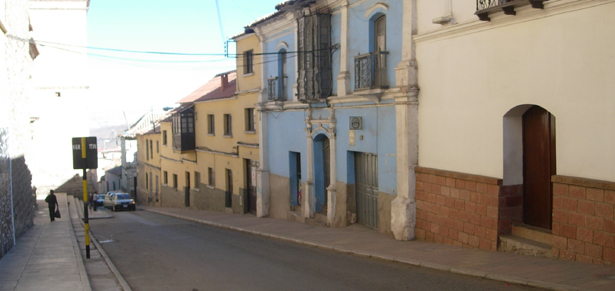Spanish Colonialism’s Environmental Legacy, Part Three: The Toxic Present

Editor’s Note: This is the last of three guest posts by NC State history lecturer Nicholas Robins, an expert on the environmental history of South America and author of “Mercury, Mining and Empire: The Human and Ecological Cost of Colonial Silver Mining in the Andes.” Robins is also founder and president of the Environmental Health Council, which he launched as a result of his research on the book.
Spain is no longer an empire, but much of the mercury which fueled the colonial, and global, economy, remains in the environments of Huancavelica and Potosi.
In Potosi, soil samples taken by the author and collaborators from 1 and 3 inch depths in 2009 had concentrations of mercury of up to 155 mg/kg, while those taken in Huancavelica had concentrations of up to an astonishing 1,200 mg/kg. The EPA soil screening level (SSL), a benchmark of residential mercury contamination for which no action is deemed necessary, is 23 mg/kg.
Making matters worse is the widespread use of contaminated adobe for home construction in both cities. While complete results of Potosi adobe samples are pending, samples of exterior adobe from homes in Huancavelica contained up to 284 mg/kg of mercury, or 12 times over the SSL, and half the concentration measured at an old smelter site. Preliminary results of our study suggest that at least 75% of the adobe bricks and 77% of the interior dirt floors exceeded the SSL and there is measurable off-gassing of elemental mercury in the interior of many homes. In both Potosi and Huancavelica, which is the capital of Peru’s poorest department, every soil sample tested contained mercury, and residents in Huancavelica describe finding liquid mercury in the soil when excavating to build foundations for their adobe homes.
The good news is that mercury mining ceased in Huancavelica in the 1970s. In Potosi, the news is mixed, for cyanide has replaced mercury in ongoing silver refining operations. Despite continuing contamination of the city and the nearby Pilcomayo river, prospects are better in Potosi than in Huancavelica. Unlike Huancavelica, Potosi is a more prosperous city, and while adobe continues to be used for home construction, the use of masonry brick is increasingly the norm. In addition, Potosi is much better integrated into the country via paved roads and social services, and has many non-government organizations working to improve the lives, and health, of its residents.
In Huancavelica, there is very limited public awareness of the risks of mercury contamination, and widespread poverty means that people often have little alternative to building with contaminated adobe. One organization, the Environmental Health Council, is working with the community there to educate them on the risks of mercury contamination, and developing effective and culturally relevant mitigation and remediation strategies.
While many peoples and countries have benefitted, directly or indirectly, from Latin America’s silver over the ages, the residents of Potosi and Huancavelica continue to grapple with, and suffer from, the effects of the amalgamation economy. They need, and deserve, the help of those who have benefitted from their legacies and profited from their loss.
Part one of this series is available here. Part two is available here.
- Categories:


